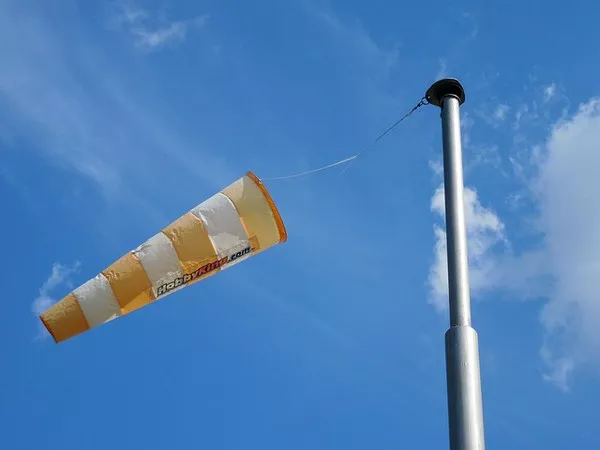Wind is a fundamental force of nature that impacts various aspects of our lives, from weather forecasting to renewable energy generation. Measuring wind speed and direction accurately is crucial in numerous applications, and one of the advanced instruments designed for this purpose is the ultrasonic anemometer. This article aims to delve into the inner workings of an ultrasonic anemometer, shedding light on its principles, components, and the technology behind its precise measurements.
Understanding Anemometry
Anemometry is the science of measuring wind speed and direction, and it plays a pivotal role in meteorology, aviation, environmental monitoring, and wind energy production. Traditional anemometers often employ mechanical components like cups and vanes that spin in the wind, generating data based on their rotational speed. However, these mechanical devices have limitations in terms of accuracy and maintenance.
Ultrasonic anemometers, on the other hand, have emerged as a modern alternative that offers several advantages. They are non-mechanical, highly accurate, and require minimal maintenance. To understand how they work, let’s break down their essential components and underlying principles.
Key Components of an Ultrasonic Anemometer
Transducers:
At the heart of every ultrasonic anemometer are the transducers. These transducers are piezoelectric crystals, typically made of quartz, that can convert electrical energy into ultrasonic sound waves and vice versa. An ultrasonic anemometer usually has two pairs of transducers, with one pair for each of the two orthogonal wind components (horizontal and vertical). These transducers are strategically positioned facing each other.
Time-of-Flight Measurement System:
To measure wind speed and direction, an ultrasonic anemometer relies on the time-of-flight principle. This involves sending ultrasonic pulses from one transducer to another and measuring the time it takes for the pulse to travel between them. The time delay is proportional to the distance between the transducers, which can be affected by wind speed.
Signal Processing Unit:
The raw data collected by the transducers is processed by a dedicated signal processing unit. This unit not only measures the time-of-flight but also compensates for temperature, pressure, and humidity variations that can affect the speed of sound in the air. The resulting wind speed and direction data are then made available for further analysis and display.
Working Principles of an Ultrasonic Anemometer
Ultrasonic Pulse Generation:
The first step in measuring wind speed and direction with an ultrasonic anemometer is the generation of ultrasonic pulses. Each pair of transducers takes turns sending and receiving pulses. When a transducer sends a pulse, it converts electrical energy into ultrasonic sound waves, which propagate through the air.
Pulse Propagation:
The ultrasonic pulse travels through the air from the sending transducer to the receiving transducer. Its speed of propagation depends on the speed of sound in the air, which can be affected by factors such as temperature, humidity, and pressure. To ensure accurate measurements, the anemometer compensates for these variables.
Time-of-Flight Measurement:
The receiving transducer detects the incoming pulse, and the time it takes for the pulse to travel from the sender to the receiver is recorded. This time delay is directly related to the distance the pulse has traveled. Since the anemometer knows the fixed distance between the transducers, it can calculate the wind speed component along the line connecting the transducers.
Wind Speed Calculation:
To calculate the wind speed and direction, the anemometer repeats this process for both pairs of transducers, one oriented in the horizontal plane and the other in the vertical plane. By combining the measurements from both pairs of transducers, the anemometer determines the wind speed in three dimensions.
Wind Direction Calculation:
Wind direction is determined by analyzing the time delays in the horizontal and vertical planes. The angles between the transducer pairs and the wind direction vector can be used to calculate the horizontal and vertical wind components. The trigonometric relationships allow the anemometer to determine the wind direction accurately.
Advantages of Ultrasonic Anemometers
Non-Mechanical Design:
One of the most significant advantages of ultrasonic anemometers is their non-mechanical design. Unlike traditional anemometers with moving parts that can wear out and require maintenance, ultrasonic anemometers have no moving components, making them highly reliable and long-lasting.
High Accuracy:
Ultrasonic anemometers are renowned for their accuracy. They provide precise measurements of wind speed and direction, even in turbulent conditions. The absence of mechanical parts eliminates friction and inertia, contributing to their exceptional accuracy.
Minimal Maintenance:
Due to their robust design, ultrasonic anemometers require minimal maintenance. There are no cups or vanes to clean, lubricate, or replace. This reduces downtime and operational costs, making them a cost-effective choice for long-term use.
Wide Range of Applications:
Ultrasonic anemometers find applications in a wide range of fields, including meteorology, aviation, environmental monitoring, wind energy, and industrial processes. Their versatility and accuracy make them invaluable tools in these industries.
Conclusion
Ultrasonic anemometers have revolutionized the field of anemometry with their non-mechanical design, high accuracy, and minimal maintenance requirements. By employing the time-of-flight measurement principle and advanced signal processing, these instruments provide precise measurements of wind speed and direction in various applications. As technology continues to advance, ultrasonic anemometers will remain at the forefront of wind measurement, ensuring accurate data for weather forecasting, aviation safety, environmental monitoring, and renewable energy generation.

